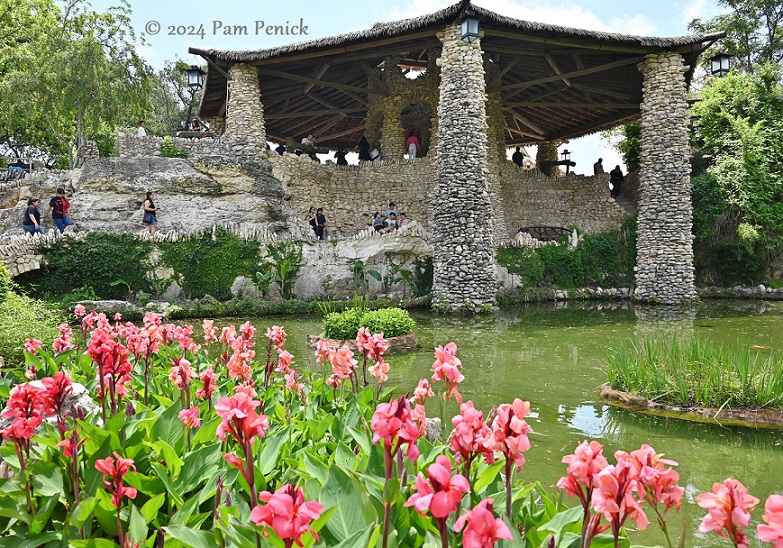The Japanese Tea Garden in San Antonio’s Brackenridge Park has distinctive rock architecture, a 60-foot waterfall, koi pond, gardens, and a wartime story.… Read More
The post Fantastical rockwork and koi pond at Japanese Tea Garden in San Antonio appeared first on Digging.
While hunting for faux bois works throughout San Antonio last month, I couldn’t miss the chance to visit the Japanese Tea Garden in Brackenridge Park. I was last there 11 years ago, and I was eager to see its distinctive rock architecture again.
A torii gate of faux bois — or trabajo rustico, as they call it in San Antonio — marks the garden’s entrance. Hand-crafted in 1942 by Dionicio Rodriguez, the gate is a work of art but also a relic of wartime passions. The gate reads Chinese Tea Garden, not Japanese Tea Garden. That’s because the gate was built the year after the Japanese attacked Pearl Harbor. As the United States went to war, the city evicted the Japanese family who’d lived in the garden since 1926, running a restaurant there. The garden was renamed, and a Chinese-American family took over the restaurant.
Forty-two years later, in 1984, the Japanese Tea Garden name was officially restored, and the torii gate remains as a historical artifact.
The garden was built on the scarred site of an old limestone quarry and cement plant that closed in 1908. When Brackenridge Park was being developed, park commissioner Ray Lambert envisioned a sunken garden and lily pond on the site, and he used prison labor to get it built in 1918-1919. A thatch-roofed limestone pavilion was constructe
Recommended Story For You :

Your Creativity with Woodworking

Dog's Hidden Intelligence- Their Full Potential and Strengthen Your Bon

Transform Your Space with the Perfect Shed- Where Functionality and Style Converge

These Primal Nutrients Support A Healthy Happy Dog

Turn Your Home Into a Self-Sufficient Homestead

Attention Dog Owners- the Secrets to a Happy and Well-Behaved Canine Companion

The Dinner Time Mistake and Add 3-5 Healthy Years to Your Dog's Life

Setting Up Your Shop: Where Imagination Meets Efficiency for Unparalleled Craftsmanship


